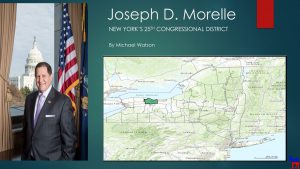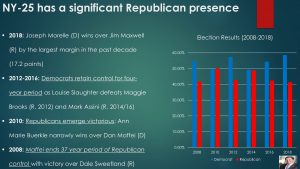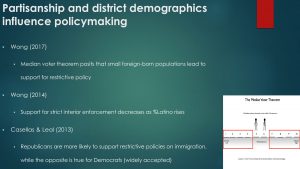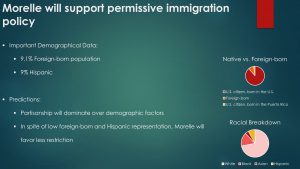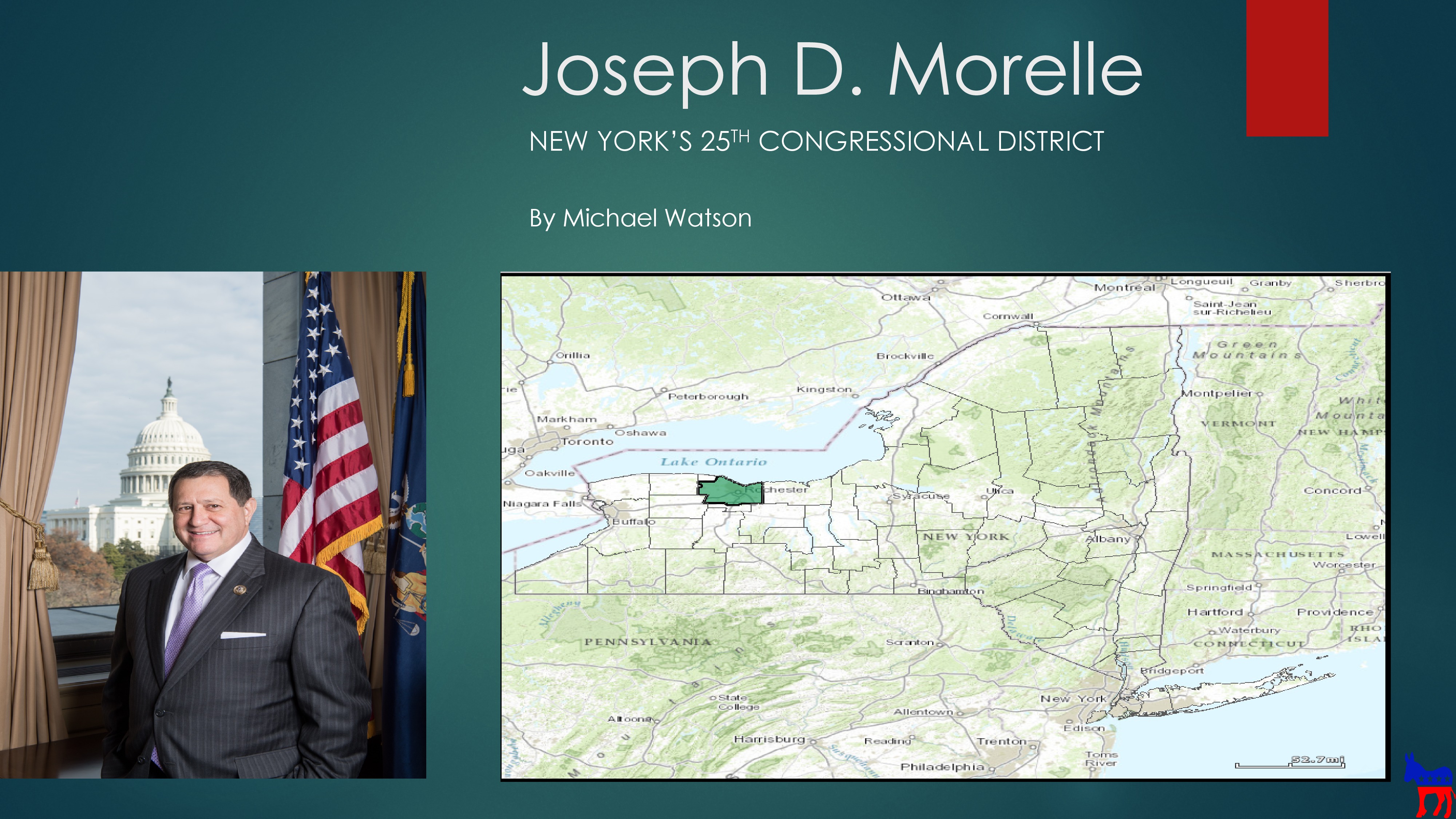
Joseph Morelle represents New York’s 25th congressional district. Since 2013, the district has been exclusively comprised of Monroe County (which is centered on Rochester, New York).
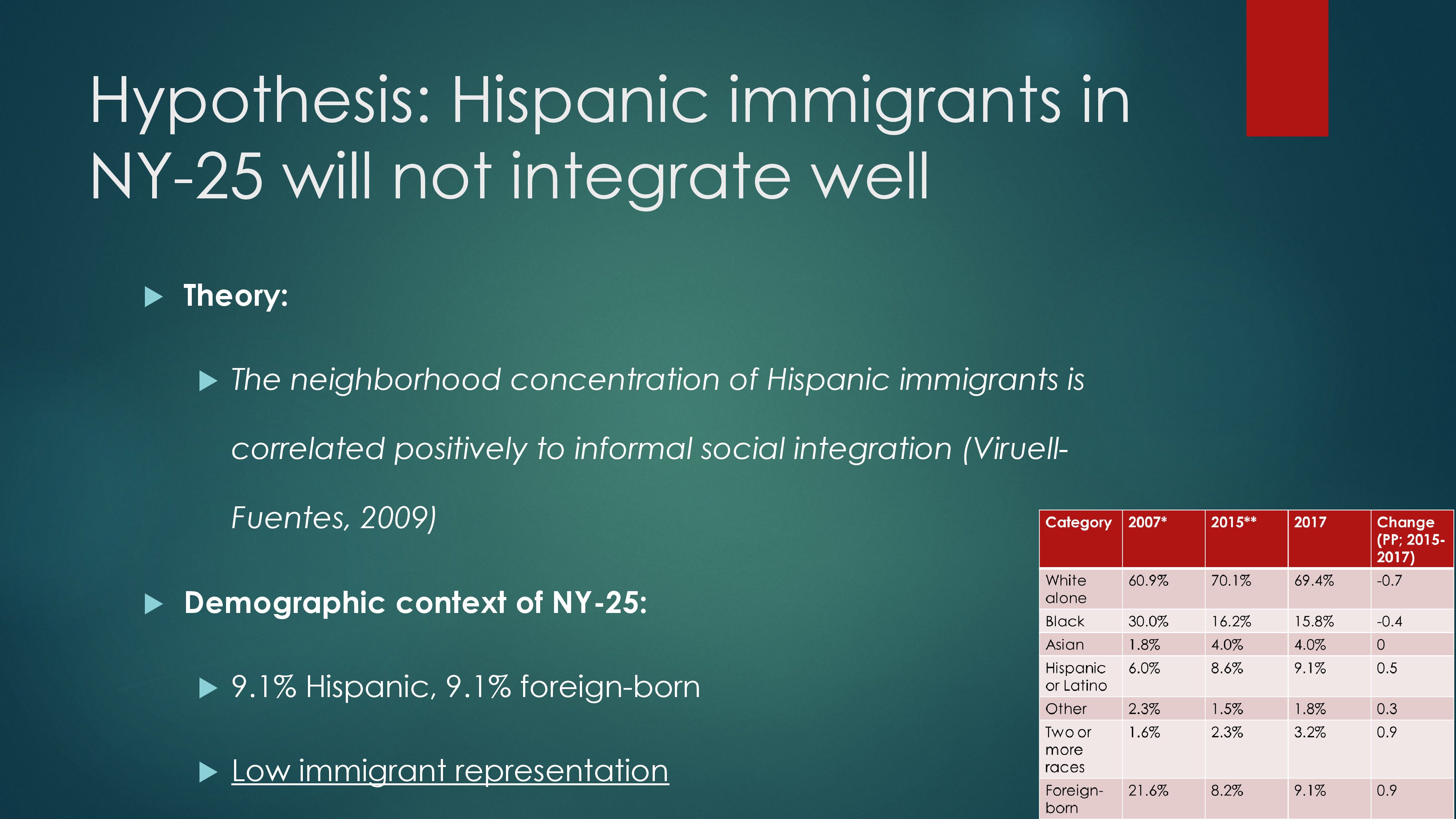
My primary prediction is that Hispanic immigrants will not experience successful social integration. In this context, I associate success with a prevailing sense of belonging among LatinX residents in addition to having diverse social networks. On this matter, Viruell-Fuentes et al. (121) conducted a study to measure whether there were significant differences in social bonds and community support within Chicago-based LatinX immigrants. The researchers discovered that neighborhood Latino/immigrant concentration significantly forecasted an immigrant’s network size and community integration. Respondents who lived in areas with more Latinos and immigrants experienced greater social success. To apply this to NY-25, it is necessary to draw on the district’s demographic data. Approximately 9.1% of the population is represented by Hispanics. Furthermore, an identical 9.1% of people in Monroe County are classified as foreign-born. With respect to Viruell-Fuentes’ findings, this low immigrant representation signals that LatinX newcomers will be relatively isolated and have limited social networks.
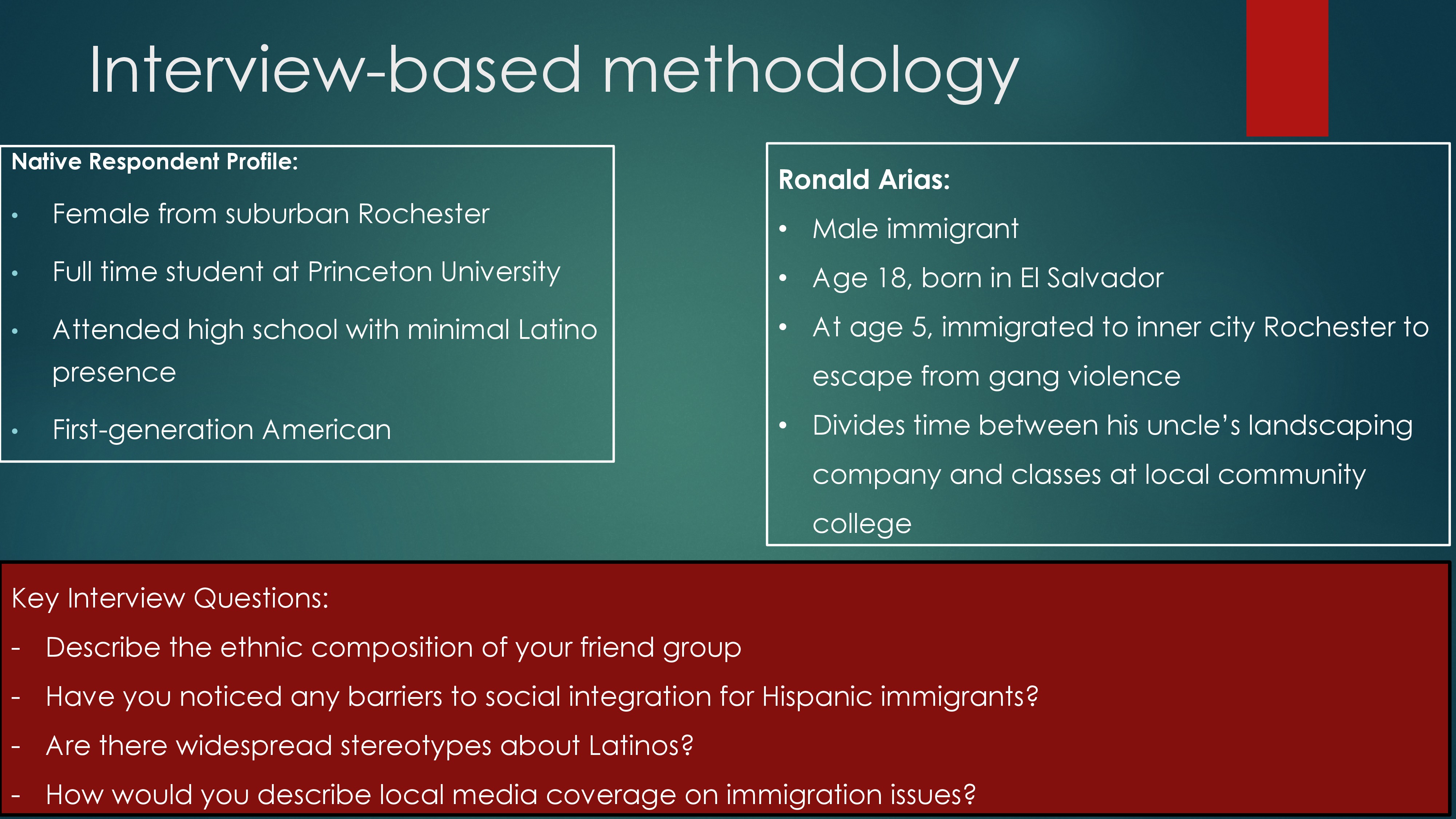
To test whether immigrants experience social integration or not, I conducted qualitative interviews with key questions about respondents’ friends groups, their perception of local media coverage on immigration issues, and their awareness of stereotypes/potential barriers to social integration. These questions were designed to tease out trends in perceived social integration between a native and an immigrant. It was important to have both native and migrant perspectives in order to compare responses about immigrant perceptions versus their real world experiences. In keeping with this, the first respondent is a student at this university who hails from NY-25 and the second respondent is an immigrant from El Salvador.
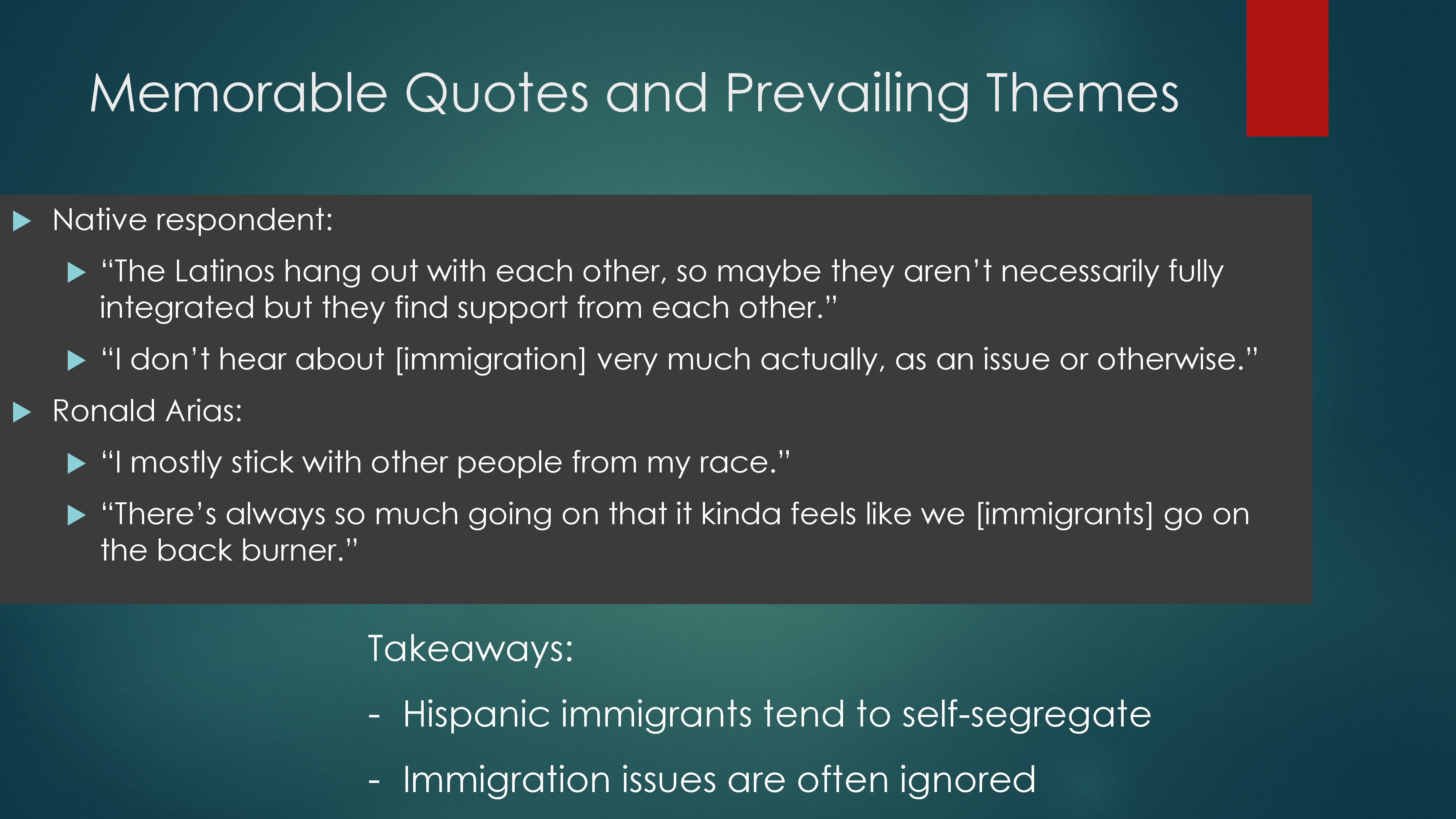
The results were fairly consistent across the two interviews: a common trend of self-segregation emerged within the LatinX immigrant population, in addition to a lack of visibility for immigration issues. Although not displayed on Slide 3, there were a few more interesting developments. When asked about impediments to social integration for immigrants, the native interviewee pointed to an occasional language barrier. She made sure to stress, however, that the oldest migrants (baby boomer generation) were the most likely to have limited language proficiency, despite long term residence in the district. In regards to whether migrants have mastered English, she went on to say that parents “usually do” and that children “definitely do.” Her observations were highly consistent with the linguistic situation in Ronald’s family. His grandparents knew very little English, his parents are relatively comfortable, and he demonstrated mastery of the language.
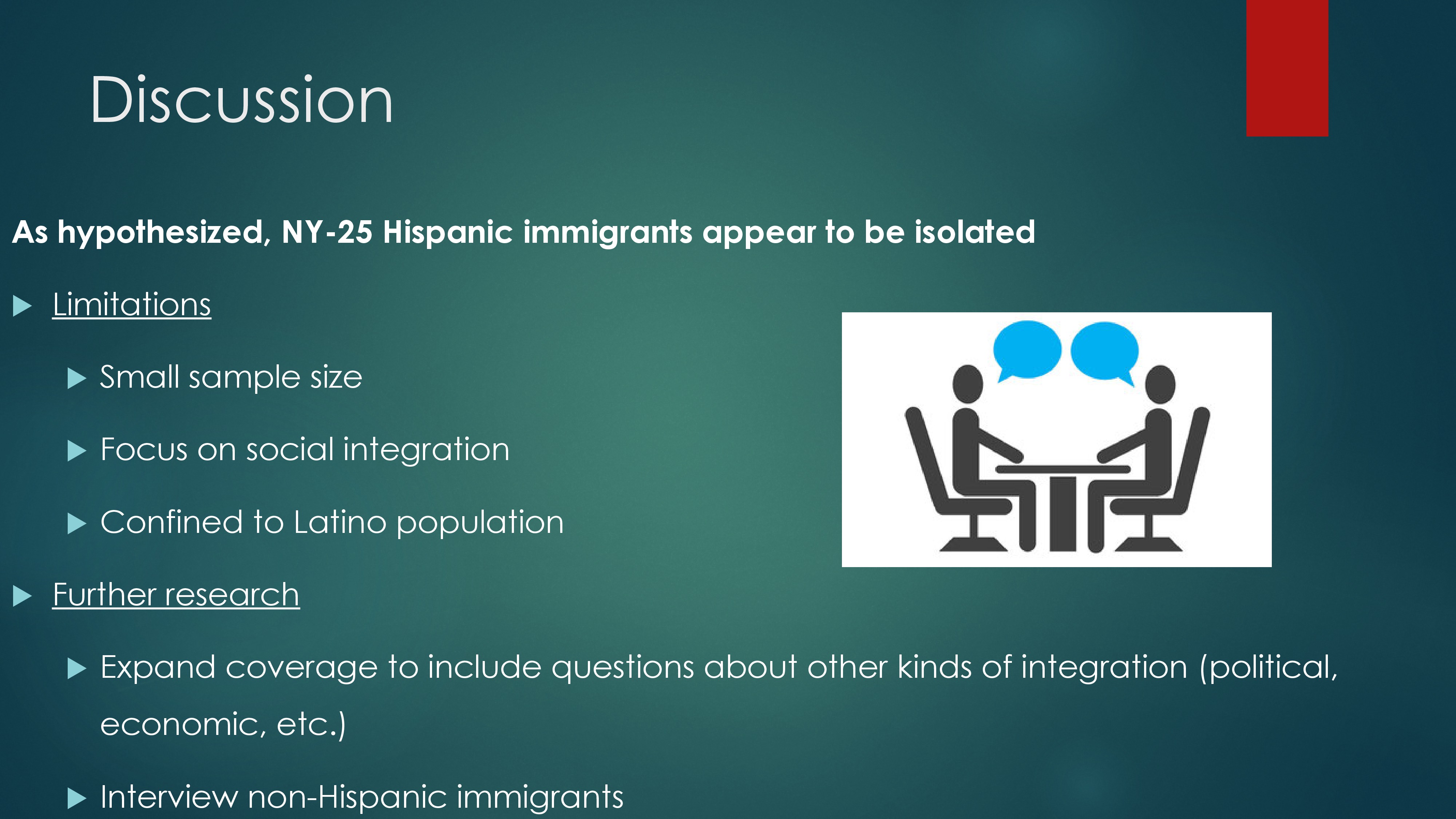
All in all, the interviews validated my predictions about social integration with LatinX immigrants. Despite the varying perspectives featured in the study, it was clear that immigrants were relatively isolated and occupied their own social spaces. To improve this study, it would be necessary to increase the sample size. This would include interviewing non-Hispanic immigrants in order to flesh out trends in NY-25 that populations more broadly. Furthermore, the interviews were confined to asking about social integration when, in reality, there are many more avenues for such assimilation (economic, political, etc.) Gathering data on employment opportunities and voting participation would have been worthwhile, for instance.
